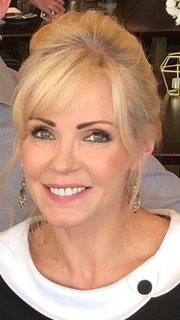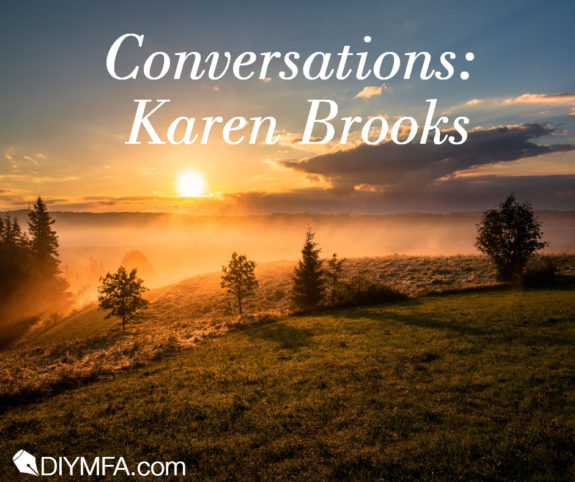I hope you’re as excited as I am about this new series for the column.
Karen Brooks is a columnist, book reviewer, blogger, former academic, and—most importantly for us—a successful author in the historical fiction genre. I discovered her work in The Locksmith’s Daughter, published in the US and the UK by HarperCollins and in Australia by Harlequin Mira. She was kind enough to agree to help launch this series, and I hope you enjoy the interview.
Q: Even though so many stories have been set in the Tudor period, I’ve often thought Sir Francis Walsingham’s enterprise was untapped, fertile ground—which you’ve used to great effect in The Locksmith’s Daughter. What initially drew you to him, even before your fascination with locks and keys?
A: I think what drew me to Sir Francis was not just the points you mention (that his enterprise has been a relatively unexploited resource—Sir Francis often appears in books and films of that era, but usually as a sidekick to Elizabeth I or William Cecil, not the major if shadowy player that he actually was; or he’s grossly misrepresented as thoroughly Machiavellian); but I think as a person, he’s not been given the role he quite deserves—good and bad.
I wanted to discover what made this man tick—root out his complexity—not just his deep religious beliefs, but his relationships with those around him from his family to the men he recruited into his spy network to the court. Sir Francis wasn’t a noble, yet he was admitted into their spheres, but was constantly made aware he didn’t really belong there. He was insulted, denigrated by the queen and folk like Robert Dudley (who also supported him), yet he continued to work on behalf of the Crown to the point of not only bankrupting himself but sacrificing his health and bonds with his own family. I was fascinated by the kind of man that would do that—give all and for so little in return—as well as his quite remarkable personal history and rise through the social ranks—a rise that only went so far, mind.
Q: The importance you place on authenticity of place, morés, and language resonates in your work. How do you immerse yourself in the speech patterns and vocabulary of a period such that it flows so naturally in your narrative and dialogue?
A: It’s a labor of love, let me tell you! Thank you so much for noticing and appreciating it. In order to achieve it to the best of my ability, I read anything I can get my hands on about and from the period. Everything from academic research, great non-fiction books (and there are some wonderful ones out there) to brilliantly immersive fictive books too.
But I also read biographies—of Sir Francis, Elizabeth, her father, Mary Queen of Scots, Dudley, and other major players—including Shakespeare, even though the setting of the novel is before his time in London. Doing that allows you to imagine yourself in the era, living in various houses, shopping, walking the streets, eating the food, dressing, managing the weather, and, finally, conversing.
More importantly, to really help, I read as many contemporary sources as possible. So I read Sir Francis’ correspondence (he was a prolific letter writer), those letters between Elizabeth and Dudley that are available, etc., as well as plays and poetry from the period. Eventually, the cadence comes to you—the way people spoke—their rhythms. The language was so rich and colourful—I adore it. But I also had to be aware that I was writing for modern audiences and couldn’t always use the patois of the time. Really, it’s a balance, and I have great editors who help me achieve that!
Q: Do you prefer to do research entirely in advance of creating a story or as you go along? How much do you use knowledge you’ve simply gathered over time, through the course of your normal pursuits?
A: Great question. I do it all. I firstly engage in extensive research prior to writing (mind you, I have the very basic shape of the book from the beginning—I know how it starts and ends, but everything that happens in between occurs during the writing). I take copious notes, watch films and documentaries as well. I also listen to the music of any era I am writing in to create mood.
As I write, I often have to stop to double-check or find out something—e.g., if a certain fabric or food was available, what a specific piece of furniture was called or a conveyance—it’s so easy to make mistakes like that. Again, when I am editing, I check and even research something further. I tend to get lost in the research—it’s the academic in me. I love it. It’s both a blessing and a curse.
Q: What’s one of the more curious, surprising, or maybe even peculiar things you’ve discovered when doing research for a story? (This question isn’t intended to ask you to reveal something you’re holding in reserve for a future tale.)
A: Gosh . . . there are so many. I think with my first work of exclusively historical fiction (not historical fantasy), The Brewer’s Tale, which is set in medieval times, what I learned that was surprising was just how much women were responsible for producing ale. Further to that, it was how much alcohol people from all walks of life consumed on a regular basis—I am talking from kings to paupers, nuns to soldiers, merchants to children. The average person downed 5 litres of alcohol a day—it was usually in the form of ale, wine, sack, cider, and mead. So, whether giving birth, fighting wars, ruling countries, praying to God, people were pretty much drunk most of the time! Of course, kids and the infirm, etc., also drank small ale, a very watered down version, but it was still alcoholic. That astonished me even though I knew water wasn’t considered safe to drink.
Also, with my book coming out in August, The Chocolate Maker’s Wife, discovering how chocolate was consumed (it was a drink, not eaten) and the decadent and religious connotations associated with it—how it was tied up with politics, plots, plans, etc.—was fascinating. I already knew about its less-than-savoury links to slavery—but the extent of it and how swiftly it happened was quite shocking. I always discover something interesting—even learning more about Sir Francis, how devious and determined and loyal he could be—was terrific.
Q: In the Author’s Notes for The Locksmith’s Daughter you mention that parallels can be drawn between Elizabethan times and today. Do you write with purposeful intent to illuminate current issues (divisiveness, women’s issues, etc.)? Or is this more happenstance of the tales you choose to spin?
A: I often ask myself the same thing—did I make that happen or was it organic? I don’t deliberately set out to be didactic—about history or present-day situations—but what I find (and I think I say this in my Author’s Note) is that the more I learn and write about the past, the more I discover parallels with today—and not in a good way.
When researching and writing The Chocolate Maker’s Wife, for example, I discovered how the government coined the term “false news” to try and render impotent any criticism of the king and court. My jaw dropped when I read that. The stifling of the burgeoning press and profession of journalism (which feature in the novel)—how it was censored—was amazing and resonates so much today in many countries. The treatment of women is always topical and the narrow roles men had, the idea of toxic masculinity and good men, also invite comparison.
In the novel I am just finishing now—a novel set in eighteenth century Scotland—I find religion, superstition, and again, women’s independence and the threat this poses to the status quo and how power is abused (by men in this instance) also reverberates with events and individuals today. I learn so much from the past. I wish we all did!
Q: Is there a question you’ve always hoped an interviewer would ask that no one has yet? Or some tidbit you’d like to share with aspiring historical fiction authors?
A: Oh, wow. I think your questions are terrific—but that one is a doozy! I haven’t yet thought of something I wish I was asked. Now, of course, the notion will buzz away in the back of my mind. But I guess a tidbit I should share with aspiring historical fiction writers is, don’t underestimate the importance of maps. I forgot to say that, when I do my research, maps play such a significant role. I am an avid map collector (I used to be an officer in the Royal Australian Army Survey Corps, so I made a living making maps while I served) and love locating myself geographically/topographically in a place.
I have maps of Elizabethan, Medieval, and Restoration London, a range of medieval towns as well, and even the area in Scotland I am writing about. I pore over them with a magnifying glass and imagine my characters walking the streets. I’m also fortunate enough to have been able to travel (sadly, not in time) to the places I write about and walk what remains of the streets as well. But maps—and Google Earth, for that matter—are invaluable. They give you an extra sense of place. I think that’s so important. If you feel it, your characters will and so will the reader.
Q: Any hint you’re willing to drop about what readers might see from you next?
A: Ah! Did I mention The Chocolate Maker’s Wife, set in Restoration London? It is being published in the USA and UK in August. I am just finishing my final draft on a book without a title (first time ever—I cannot settle on one) that is based on a horrific true story and is set on the wild coast of Scotland in the early 1700s and involves the magnificent, thoroughly independent and feisty fishwives. It’s very dark, very harrowing but also amazing—I hope my novel does the women that feature in it justice.
Thank you so much for having me. Your questions were wonderful.

Karen Brooks is an Australian author, columnist, social commentator and academic. She is the author of several historical fiction novels including The Locksmith’s Daughter and The Chocolate Maker’s Wife. She has also written fantasy novels for children and young adults, as well as several short stories and nonfiction works. Karen lives in Hobart, Tasmania, with her partner and two children. You can connect with Karen on her website at karenrbrooks.com. You can also follow Karen on her Facebook Author Page and on Twitter at @KarenBrooksAU.

Pamela Taylor’s inspiration for her first book turned out to be that final straw that pushed her to leave the corporate world behind for the world of words and imagination. Now an author and an editor, she loves helping others polish their stories almost as much as she enjoys writing her own. She’s a member of the DFW Writers Workshop and the Editorial Freelancers Association and is in her second year on the judges panel for the Ink & Insights Contest. You can learn more about her books at secondsonchronicles.com, and about her editing services at editing4you.com.







